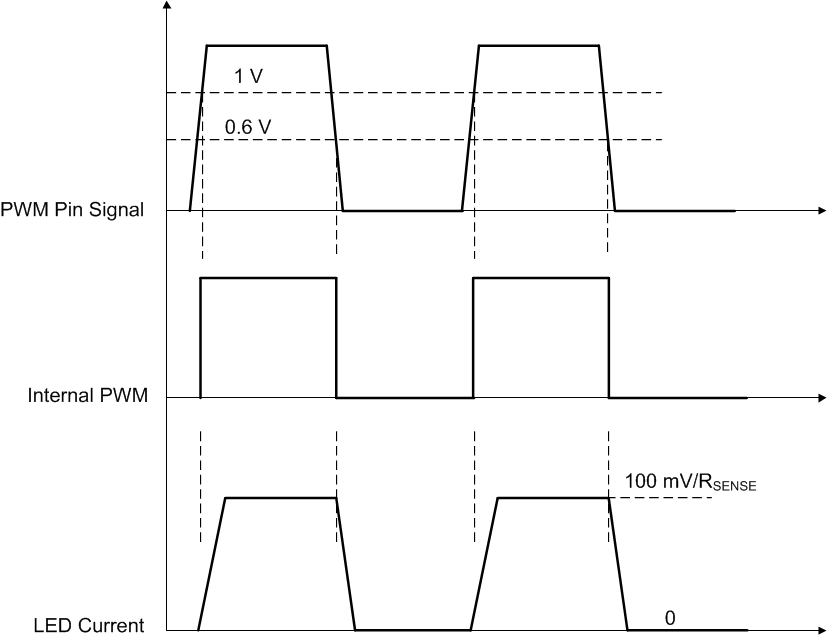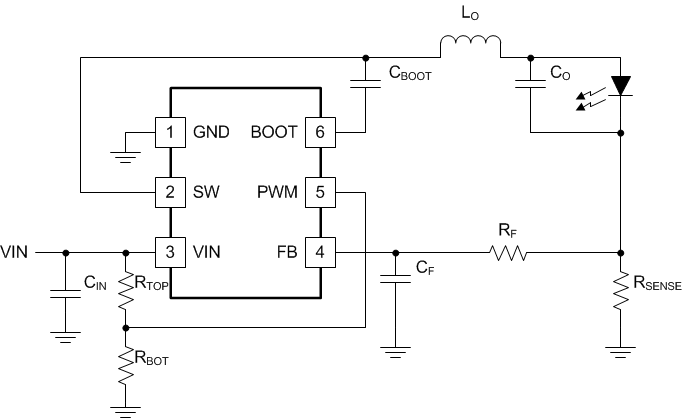SLUSCO8B November 2016 – June 2018 TPS54200 , TPS54201
PRODUCTION DATA.
- 1 Features
- 2 Applications
- 3 Description
- 4 Revision History
- 5 Description (continued)
- 6 Pin Configuration and Functions
- 7 Specifications
-
8 Detailed Description
- 8.1 Overview
- 8.2 Functional Block Diagram
- 8.3 Feature Description
- 8.4 Device Functional Modes
- 9 Application and Implementation
- 10Power Supply Recommendations
- 11Layout
- 12Device and Documentation Support
- 13Mechanical, Packaging, and Orderable Information
Package Options
Mechanical Data (Package|Pins)
- DDC|6
Thermal pad, mechanical data (Package|Pins)
Orderable Information
8.4.4 PWM Dimming-Mode Operation
Once the PWM dimming mode is chosen, the internal voltage reference for the FB pin is fixed at 100 mV. The LED current is on or off corresponding to the PWM state, see Figure 19. Due to the limited control-loop response, to get a relatively linear dimming performance, the suggested PWM signal frequency should be less than 1 kHz.
 Figure 19. PWM Dimming Operation
Figure 19. PWM Dimming Operation
In some application where dimming is not needed, one can just connect a resistor divider from VVIN to the PWM pin as Figure 20 shows.
 Figure 20. Application Without Dimming
Figure 20. Application Without Dimming
RTOP and RBOT should be sized to make sure the PWM pin voltage is higher than 1 V when VVIN reaches its steady voltage. It is best to make sure the PWM pin voltage is less than 2 V, thus one can have 100 mV at the FB pin for better efficiency. Use 10 kΩ as a good starting point for RBOT, then choose RTOP according to Equation 2:
